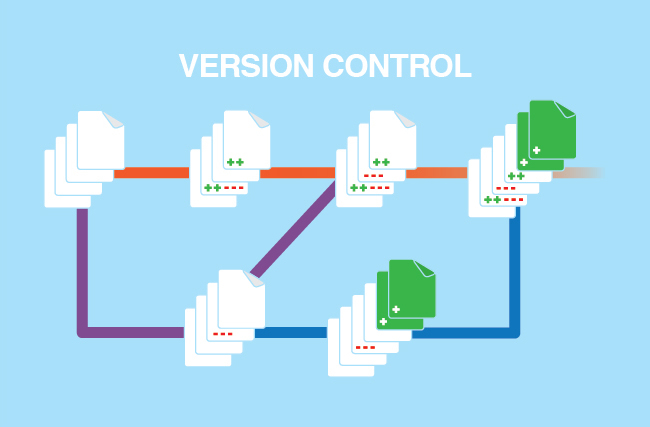A Beginner-Friendly Guide to Version Control and DevOps Through Real-World Analogy
 swetha maran
swetha maranTrack your code like a pro. Automate your deployment like a DevOps engineer!

Image source : https://www.linode.com
Version Control System (VCS):
A Version Control System helps you track and manage changes to files over time. It allows multiple people to collaborate on a project, experiment safely, and revert to previous versions if needed — ensuring a reliable and organized workflow.
Advantages of using a Version Control System (VCS)
Tracks Changes Over Time
Enables Collaboration
Supports Branching and Merging
Provides a Single Source of Truth
Enhances Code Quality
Improves Backup and Recovery
Supports CI/CD Pipelines
Have you ever made yourself the perfect sandwich just the right amount of cheese, sauce, crunchy veggies and thought, “I wish I remembered exactly how I made this!” Then the next time you try, it’s… not quite the same?
You might’ve changed the bread, added pickles, forgot the mayo. Boom your sandwich magic is lost.

This is where version control comes in. But instead of code and computers, let’s break it down with something we all understand: food specifically, sandwiches. And just like in DevOps, we focus on automating and streamlining the process to make sure your sandwiches (and your workflow) are always on point.
What Is Version Control? Think of It Like Your Sandwich Log
Imagine you’re on a quest to make the perfect sandwich. Every day, you try a new twist:
Add grilled onions,
Swap cheddar for mozzarella,
Toast the bread just right.
You keep a notebook where you write down what you changed each time. This notebook is your version control system.
In DevOps, version control helps teams track changes to software, automating parts of the process (like deployment). Similarly, your sandwich notebook helps you track the steps and ingredients for each version of your perfect sandwich so you don’t need to start from scratch every time.
Snapshots of Your Sandwich = Commits
Every time you tweak your sandwich, you jot down what changed. In version control, these are called commits small snapshots with a description.
Example Commit History:
Commit 1: "Used sourdough instead of white bread."
Commit 2: "Added spicy mustard."
Commit 3: "Tried turkey instead of ham."
Each commit in version control is like recording each successful (or not so successful) sandwich. It's the foundation of continuous integration in DevOps: every change you make is tracked, tested, and integrated into the next big thing!
Sandwich Experiments With Friends = Collaboration
Now imagine your friend joins the sandwich fun. They love olives and want to try adding some. Instead of messing with your recipe, they create their own version.
Later, you taste both and decide to combine your crispy bacon with their olive twist. You’ve now merged your sandwich versions!
This is just like the collaborative nature of DevOps. With version control, different people can work on separate features or fixes (like adding olives or bacon) without stepping on each other's toes. When ready, you merge the best parts into a final product just like merging different parts of a software project.
Your Sandwich Notebook = Repository
All your sandwich versions and notes live in one big notebook. That’s your repository (or "repo"). It’s like your codebase in DevOps: the central place where everything is stored and tracked.
Every version of your sandwich recipe is saved here, organized, backed up, and always accessible. This is key in DevOps, where teams rely on a central repository to store all their code and collaborate in real time.
Sharing Your Sandwich = Pushing to Remote
Once you’ve nailed your sandwich masterpiece, you want to show it off. Maybe post it in your foodie group chat or upload the recipe to your blog.
In version control, this is called pushing to a remote. You’re sending your final sandwich version to an online space where others can admire it, test it, or remix it.
In DevOps, pushing to remote is like deploying your app to a cloud service. It’s where your work becomes available to everyone, and they can pull it down to try it out, test it, and make their own versions.
“Here’s my best sandwich yet go make one!”
Made a Mess? Just Revert
One day, you get too experimental. You add peanut butter, pickles, and anchovies... and it’s a disaster. 😅
Thankfully, you can flip back in your notebook and remake that sandwich from two days ago that everyone loved.
In version control, this is a revert. Like a magic "undo" button that keeps you from feeding your bad idea to others. It’s the rollback feature in DevOps: if a change breaks something, you can easily revert to a stable version of your code or sandwich.
Final Thoughts: Sandwich Smarts = Version Control Smarts
Version control sounds technical, but it’s really just about:
Keeping a history of your work,
Safely experimenting,
Collaborating with others,
And being able to roll back when things go sideways.
DevOps takes version control one step further by automating deployment and integrating code continuously, ensuring everything runs smoothly, like the perfectly timed assembly of a sandwich line.
Whether you're building software or building the ultimate sandwich, version control helps you level up without losing track.
So next time you bite into something great, ask yourself: Did I save this version?
Because just like code, a sandwich worth remembering is a sandwich worth tracking.
Final Bite :

Whether you’re building a sandwich or building software, version control (and a bit of DevOps) helps you track your steps, test new ideas, and share your best work.
It keeps your best creations safe and easy to repeat again and again.
Because when something turns out great, you’ll want to make it just as awesome the next time too! 🥪💻
Connect with me on LinkedIn : Swetha Maran
Subscribe to my newsletter
Read articles from swetha maran directly inside your inbox. Subscribe to the newsletter, and don't miss out.
Written by
